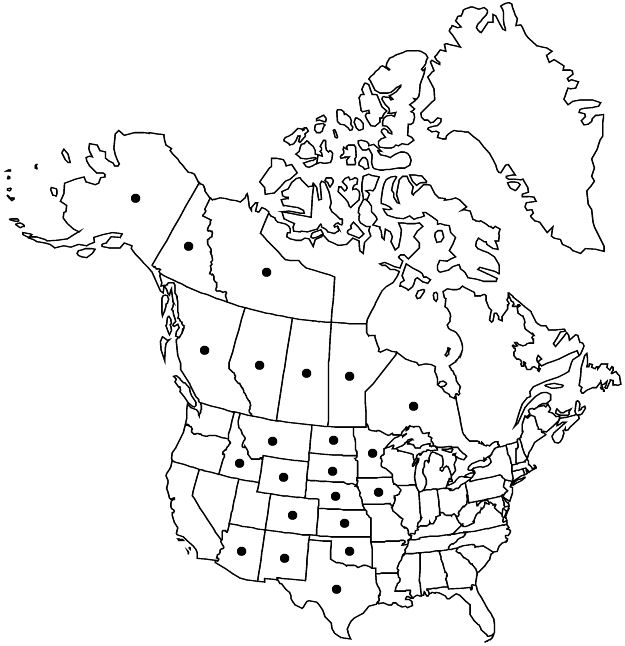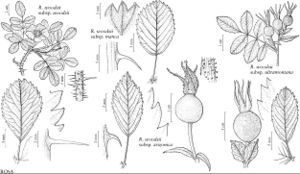Rosa woodsii subsp. woodsii
Shrubs, 2–10(–20) dm. Stems usually densely branched; prickles usually present on distal stems and branches, infrastipular erect, rarely appressed or curved, terete or subulate, 2–8 mm, internodal dense, sometimes sparse or absent. Terminal leaflets obovate, sometimes ovate or elliptic, 13–30(–35) mm. Inflorescences 1–3(+)-flowered. Sepals: abaxial surfaces eglandular, rarely stipitate-glandular (north of 49° parallel). 2n = 14.
Phenology: Flowering Jun–Jul(–Aug).
Habitat: Prairies, plains, riparian and woodland areas
Elevation: 100–2200(–3500) m
Distribution

Alta., B.C., Man., N.W.T., Ont., Sask., Yukon, Alaska, Ariz., Colo., Idaho, Iowa, Kans., Minn., Mont., Nebr., N.Mex., N.Dak., Okla., S.Dak., Tex., Wyo., Mexico (Coahuila).
Discussion
Subspecies woodsii is the only subspecies of Rosa woodsii occurring east of the Rocky Mountains, where it is found from the prairies of northern Canada and central Alaska to the mountains of northern Mexico. The subspecies also extends west in valleys of the Rocky Mountains (for example, barely entering Idaho at Monida Pass), where it intergrades with other subspecies. The subspecies is sometimes introduced in Quebec, Illinois, Missouri, and Wisconsin; such introductions are mostly transient. Pending further study, var. maderensis Henrickson of northern Mexico is tentatively included in this subspecies. Within this large geographic range, significant variation occurs in glandularity and other features (V. L. Harms 1974; W. H. Lewis and B. Ertter 2010); usually plants are relatively compact, with abundant erect prickles, obovate leaflets, and relatively few flowers.
In central Canada, particularly in Alberta, western Manitoba, and Saskatchewan, populations of subsp. woodsii often express gigas (enlarged) features of leaves, stem heights, floral diameters, and petals at extreme morphologic ranges of the subspecies. A tetraploid (2n = 28) having these characteristics (W. H. Lewis, unpubl.) has been found in populations near Edmonton, Alberta; such diversity may be due, at least in part, to autopolyploidy or, alternately, hybridization with R. acicularis subsp. sayi (2n = 42), as B. Ziola and J. R. Dugle (1970) concluded in Manitoba and V. L. Harms (1974) in Saskatchewan. Rosa acicularis usually completes flowering about ten days before R. woodsii, although in some years overlaps occur.
Selected References
None.
